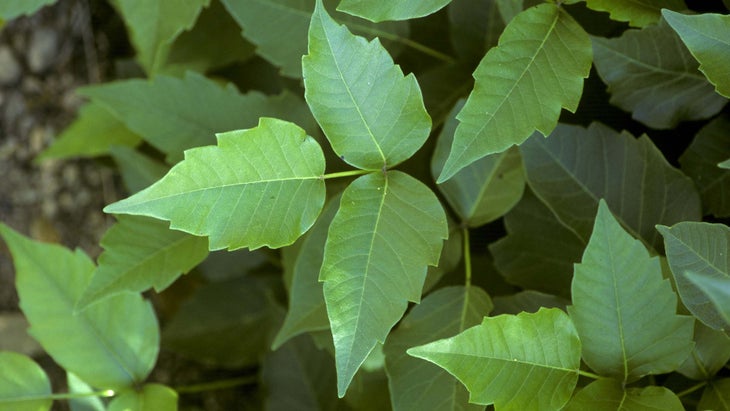Heading out the door? Read this article on the new Outside+ app available now on iOS devices for members! Download the app.
It’s been a hot summer around the United States. Not just hot: broiling. With all-time heat records falling like dominoes, it’s hard to imagine wanting to hike in long pants. But if you live somewhere poison ivy is rampant, you might not have a choice.
If you’ve never had a run-in with poison ivy, count yourself lucky. Unknowingly brush against it, and you can quickly burst into a rash, suffering from incessant itching and burning for weeks. Since somewhere between 80% and 85% of people are allergic to this plant’s oils, avoiding the “leaves of three” is something most of us learn as kids.
It turns out climate change may not just be making the planet hotter, it might be worsening poison ivy too. Current research suggests that poison ivy may be growing faster and larger due to rising heat and CO2 levels in the atmosphere, and the situation is likely to get worse.
In 2006, a Duke University study demonstrated that rising CO2 levels—a major factor in human-caused climate change—may be beneficial for viney plants like poison ivy. The 6-year study found that “elevated atmospheric CO2 in an intact forest ecosystem increases photosynthesis, water use efficiency, growth, and population biomass of poison ivy,” Researchers wrote. Led by Jacqueline E. Mohan, now a professor at the University of Georgia’s Odum School of Ecology, the team found that a 1.5 times increase in CO2 levels led to a corresponding 150% increase in growth speed.
As if that weren’t enough, the plants raised in a high-CO2 environment produced a more allergenic form of urushiol, the substance that causes rashes in most people exposed to the plant. According to the CDC, it takes just 50 micrograms of urushiol (the component that causes an allergic reaction) to cause a response.

A 2017 study from Columbia University generated similar results to the Duke team, with researchers finding that leaf area and growth speed both increased as they exposed plants to higher levels of CO2. And if you feel like you’re running into poison ivy more now than when you were a kid, you’re likely not wrong: The study found the greatest proportional increase in growth when they boosted CO2 levels from what they would have been in the middle of the 20th century to what they are today.
A generation of supercharged poison ivy should be concerning for humans who react to the plant, which is most of us. But it’s also likely to impact nearby flora and fauna. Since not all plants respond to CO2 like poison ivy does, it’s possible that growing vines could cause an imbalance in natural ecosystems, choking out more benign plants.
As with any research, there are caveats. Some scientists note that rising CO2 levels alone cannot predict the outcome a rapidly changing climate will have on plants, including poison ivy, with any beneficial effect of CO2 likely canceled out by less rain and hotter summers. Things like moisture levels and sun exposure can also impact growth. After adding a certain amount of CO2 to the atmosphere, the benefits will plateau even for poison ivy.
Still, climate change marches on: CO2 levels are higher than they’ve been in the past 4 million years, reaching 419 parts per million. At our current rate, climate scientists expect CO2 levels to exceed 900 ppm by the year 2100. Next to crop failure, deadly heat waves, and sea level rise, more poison ivy may seem like a relatively trivial effect. But for those of who love to hike, the future may involve a lot more calamine lotion than we’d like.
